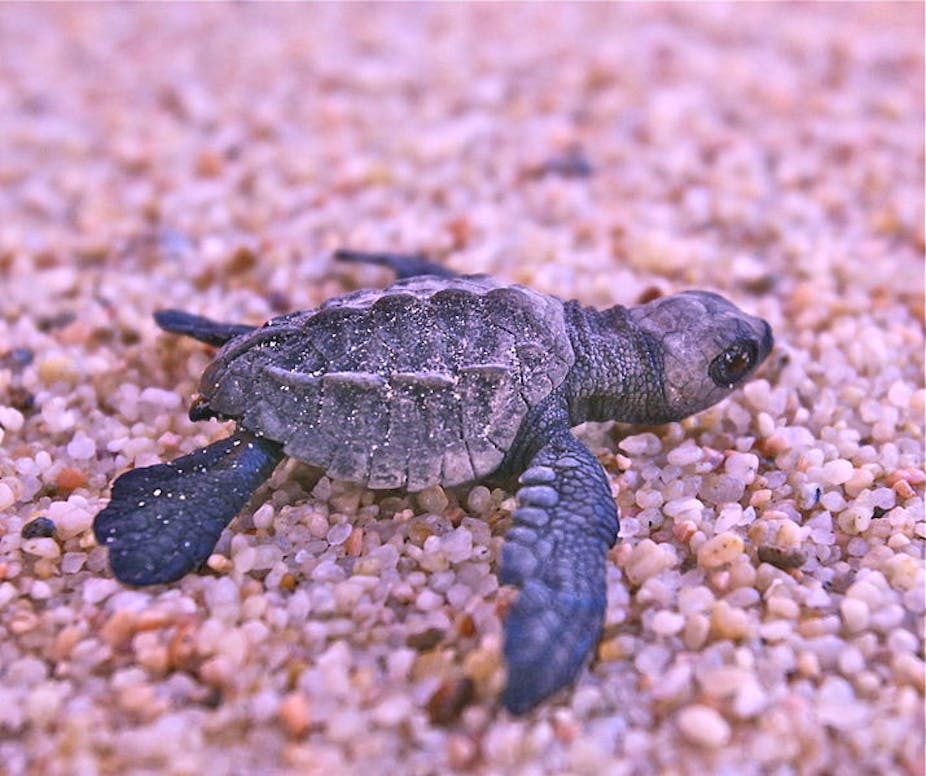On a small stretch of beach at Ostional in Costa Rica, hundreds of thousands of sea turtles nest simultaneously in events known as arribadas. Because there are so many eggs in the sand, nesting females frequently dig up previously laid nests, leaving the beach littered with broken eggs. But these endangered sea turtles are facing a new threat: sand microbes encouraged by the decomposing eggs.
Results from a new study we’ve published in PLOS ONE show how these sand microbes cause low levels of oxygen in the nests that interfere with the embryonic development of the sea turtles.
Despite the large number of nesting females, hatching success at Ostional beach is particularly low. Scientists have long thought that the problem is due to high microbial activity in the sand caused by the decomposing eggs. In a previous study, we found that nests at Ostional have lower oxygen levels than other sea turtle nests do. This suggested that microbial activity did indeed impact nest oxygen – but it wasn’t until now that this was tested and confirmed. It means that we can now use the results to aid the conservation of these endangered turtle species.
Head in the sand
To understand how microbes affect sea turtle nests, we used different treatments to alter the number of microbes within the nest sand. We monitored nest temperature and oxygen levels throughout the incubation period. We also quantified the number of microbes in the sand and the microbial decomposition of organic matter.
Our results allowed us to look at how all of these factors were associated with sea turtle hatching success. We found that removing and replacing the sand, much like the agricultural practice of tilling, was the most successful treatment for increasing hatching success and decreasing microbial numbers. As we suspected, higher numbers of microbes in the sand were associated with lower hatching success as well as lower oxygen and higher temperatures in the nest.
Essentially, microbial activity in the sand at Ostional beach is so high that microbes are taking up all of the oxygen that the sea turtle embryos need to develop. Additionally, just like a compost pile, the microbial decomposition also increases nest temperatures.

Hatching success of sea turtles is a primary conservation concern, given the current threatened and endangered status of these species. In addition to the disruption of nest oxygen levels by microbial activity, human activity above ground also affects hatching success.
Conservation implications
Increasing temperatures due to climate change could increase microbial decomposition rates even more, further impacting sea turtle hatching success. Temperature increase is a particularly important factor because it determines the sex of the sea turtle and high temperatures are also lethal to embryos. Another human impact on sea turtle hatching success comes from the use of fertilisers and beach re-nourishment programmes, which introduce extra organic materials to the beach. These could fuel higher microbial activity, thus also impacting sea turtle hatching success.
While arribadas occur at very few beaches, sea turtle conservation programmes around the world use hatcheries to protect nests from threats such as beach erosion and poaching. These enclosures into which nests are relocated often have problems with microbial infestations, just like those studied in Costa Rica. Our results will therefore help these conservation programmes by providing sand treatment options to manage microbial infestations and increase hatching success.

